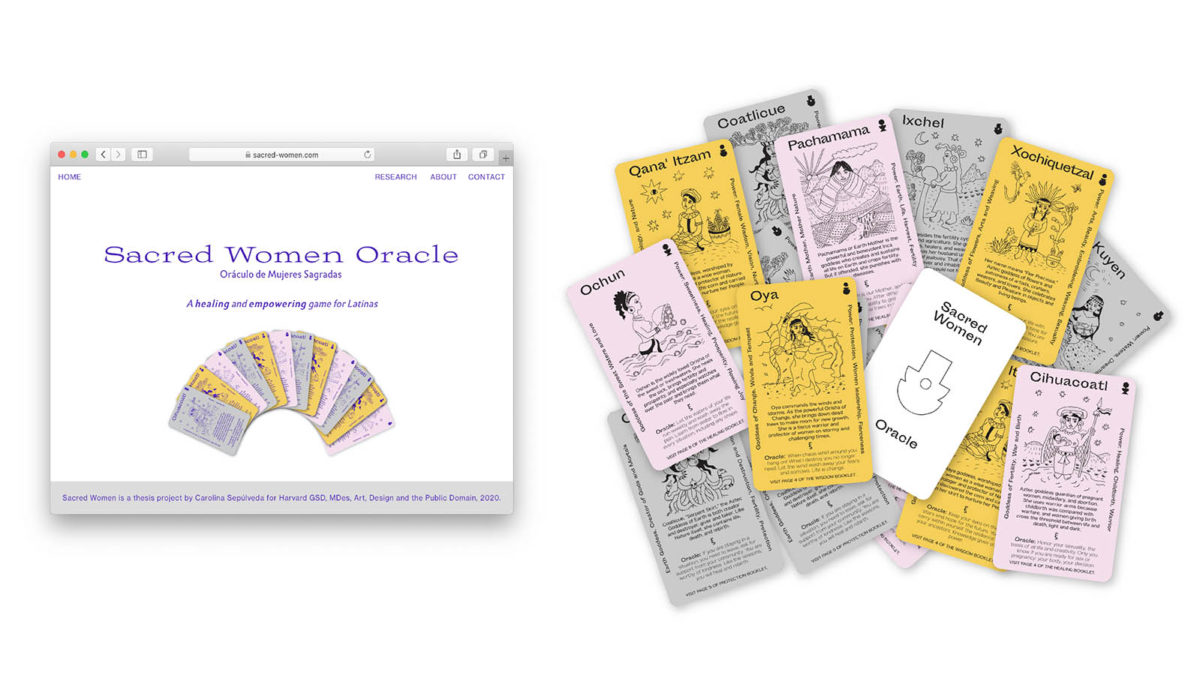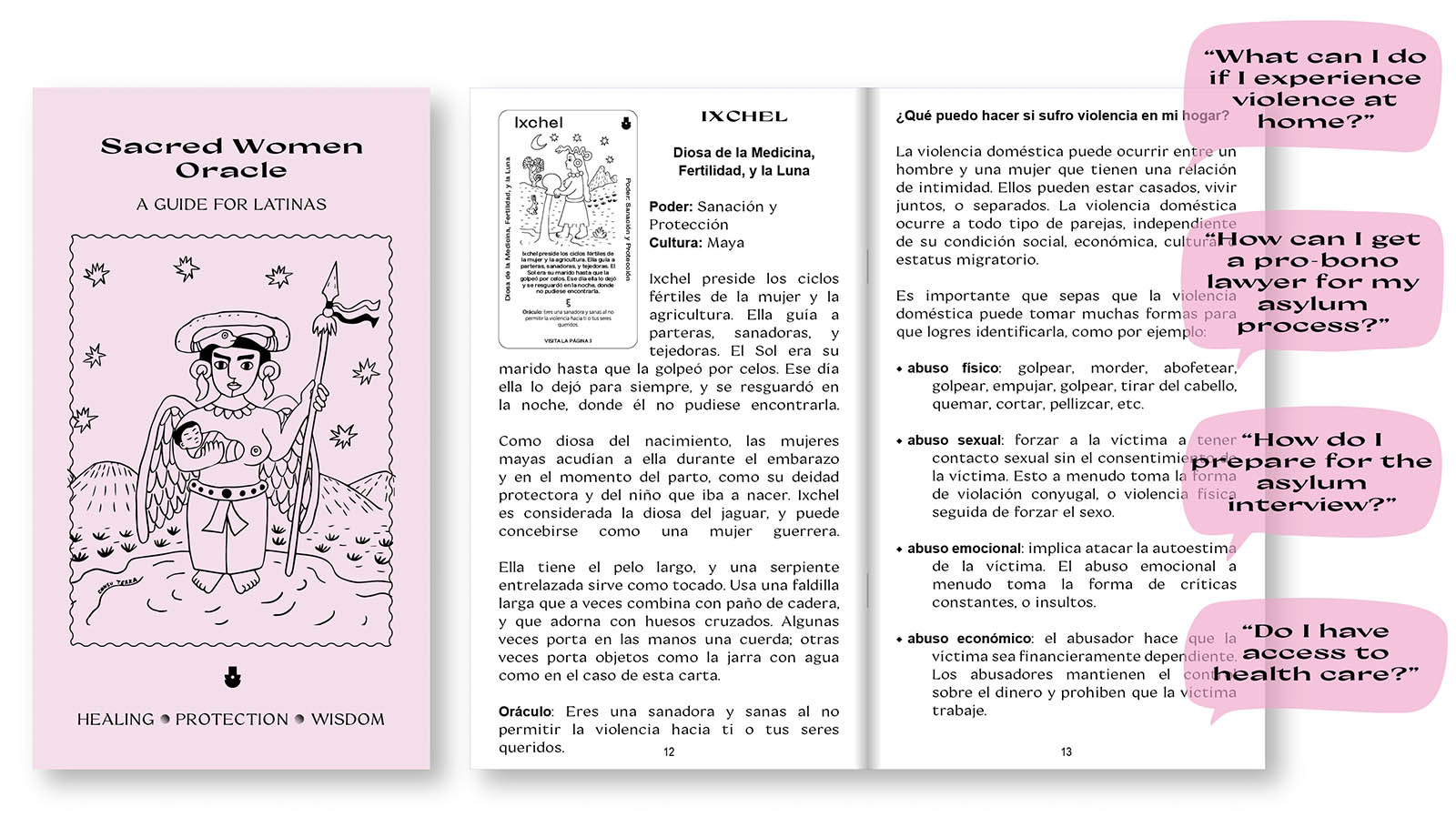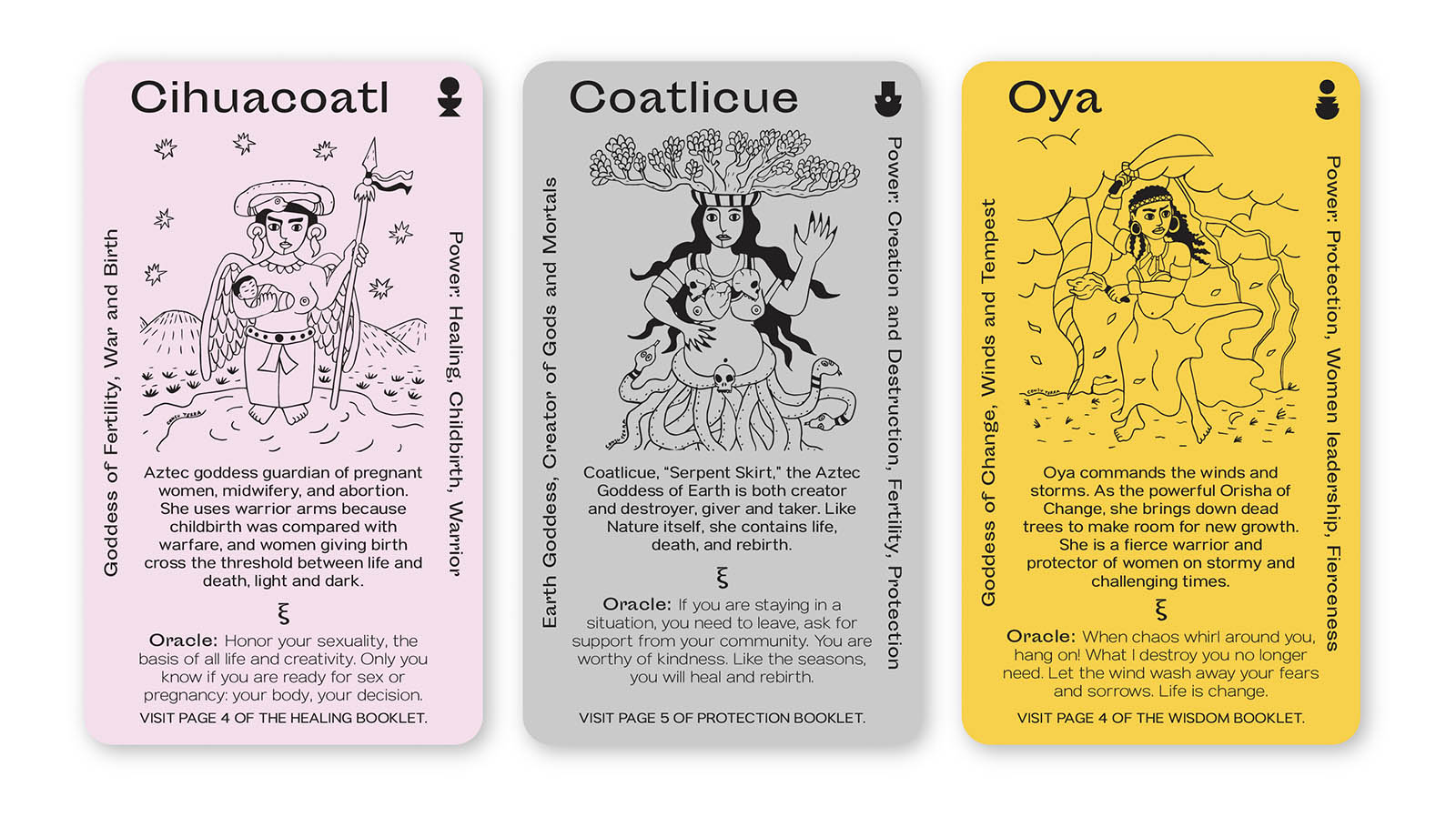The Harvard Graduate School of Design’s Student Emergency Fund (SEF) was established in March to support students and recent graduates during a time of uncertainty—uncertainty around pandemic-dampened employment prospects, for one, but also around issues both persistent and urgent that have been highlighted in recent months: race-driven injustice, climate change, and degrading infrastructure. For a number of student researchers, SEF offered an opportunity to not only deepen their research agendas, but also to consider how their design skills and established research may apply to questions and dilemmas exacerbated by the COVID-19 pandemic.
The 227 research projects supported by SEF span the globe and the design disciplines; within this breadth, investigations have proceeded deeply into topics and questions that may offer new directions for the design dialogue and interventions around today’s cultural and global issues.
New Mapping for a New Africa
Zarina Ateig’s hometown of Khartoum, Sudan, has remained close to her heart and her studies throughout her Harvard career.
As in many African cities and nations, years of political and cultural unrest across Sudan have strained civic infrastructure, as well as the urban planning tools that inform and design such infrastructure. A scaling-down of town authorities and urban planning curricula has resulted in, among other effects, a lack of accurate maps and other data on Sudan and its capital, Khartoum, a problem endemic to other cities and regions throughout Africa.
Yet, while monitoring Sudan’s COVID response from afar, Ateig (MDes ’20) was inspired by the both number and sophistication of pandemic-relief initiatives that sprouted throughout the nation. Trained in urban data and real-estate development, she sensed a burgeoning opportunity to connect her design and research skills with some of these promising initiatives. She also recognized the nation’s general need for stronger population data.
“The first step toward rebuilding a country is understanding who lives in it,” Ateig says. “Without an accurate understanding of who lives in these neighborhoods and cities, how could we begin to plan for any kind of human-centered—and locally specific—preservation and development?”
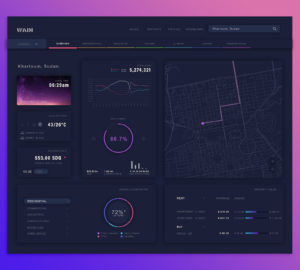
Ateig’s summer research aims to collect and maintain accurate geospatial and census data for Khartoum as a case study, with implications for population data and mapping across the African continent. She also plans to prototype a software solution that merges the two data types into a customizable, real-time, user-friendly dashboard for use by government bodies, academic institutions, and the private sector. SEF funding has enabled her to secure datasets and software tools needed to design her vision, as well as, she says, “an opportunity to spend more time rethinking and prototyping outside the box.”
Ateig is driven, in part, by the strong need for data collection as well as a particular set of opportunities throughout Africa’s growing cities: Africa is the world’s youngest continent, she notes, and younger populations are more likely to volunteer data and then apply it innovatively. Such a condition may lend itself to ready data collection and nimble application to planning dilemmas. Ateig credits a spring 2020 course she audited at MIT—“Data Science and Machine Learning,” with Andrea Chegut—for an “aha moment,” in which she envisioned new ways for digital data to inform market functions and urban planning decisions.
Ateig senses that a cultural and political momentum has blossomed in Sudan’s very recent history: after a lifting of US sanctions, a social revolution 2018 protests deposed the government of Omar al-Bashir. Meanwhile, a sovereign council, led by Sudan’s new prime minister, Dr. Abdalla Hamdok, was put in place to govern until the upcoming elections. In his address to the AU Executive Council at the African Union Summit in 2017, Hamdok noted that inadequate urban planning policy and governance have been fundamental to conflict and violence across Africa—exactly the issue Ateig hopes to address.
“During the protests of late 2018, one of the most popular chants was hanabneehu, Arabic for ‘We will build it’ and a reference to the ‘New Sudan,’” Ateig says. “As the sovereign council begins to organize its work toward sustainable economic recovery, my hope is that special attention is paid to the ways in which technology and proactive urban planning can be merged to prioritize affordable housing, promote placemaking through safe mixed-use developments, and the reclamation of underused open spaces.”
Ultimately, Ateig hopes to prototype her software solution to a level that is detailed enough for serious conversations with public and private institutions that might be able to develop the software further.
“We are witnessing a clear shift in that the data people produce on a daily basis could become far more valuable than the actual buildings they inhibit or frequent,” Ateig observes. “In Africa, the youngest continent in the world, this presents enormous opportunities. In Sudan alone, 60 percent of the population is under the age of 25, and while internet penetration rates are somewhere around 30 percent, these communities still remain digitally connected. If we build on that alone, can you imagine the possibilities?”
A Toolkit to Both Inspire and Inform Migrant Latina Women
Well before COVID-19 rooted itself in the United States, Carolina Sepúlveda (MDes ’20) had been cognizant of health care disparities across the nation. Her long-standing research on the experiences of migrant women journeying from Central America to the United States had revealed, she says, a systemic lack of not only direct health care access for this and other vulnerable populations, but also a lack of access to information about health care and other basic rights.
Sepúlveda’s years of research fueled her thesis project, Sacred Women: Navigating the Journey of Latinas to the United States, in which she considered the journey from Central America to the US-Mexico border in three stages: the forces behind displacement and migration; the difficulties inherent to transit northward; and the subsequent challenges of resettling in the US. Throughout Sepúlveda’s research, a central question arose: What can design do to inform and empower migrant Latinas about their rights?
SEF has enabled Sepúlveda to expand her thesis research into an in-progress design intervention: a toolkit entitled the Sacred Women Oracle—a set of 30 cards and a 60-page guide—that informs migrant Latinas about their rights, offers advice on healing and self-care, and encourages them to seek educational programs, acquire new language skills, and be proactive about their legal immigration status. One of Sepúlveda’s aims is to deliver vital information that is more engaging and more easily grasped than dry, text-heavy reading material.
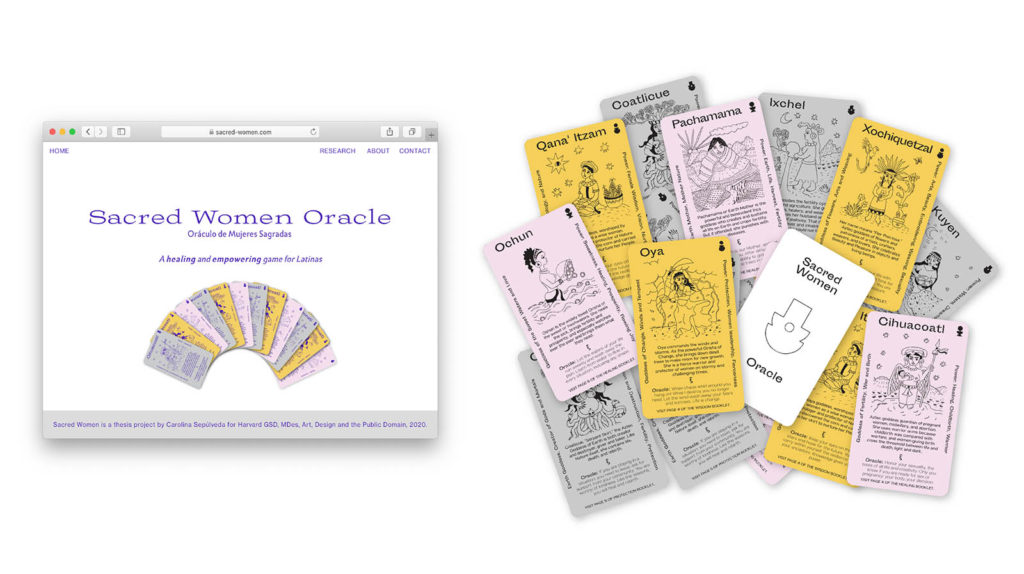
The Sacred Women Oracle invokes goddesses from Native cultures from the Americas, such as the Maya and the Aztec civilizations, as well as diasporic religions including Haitian Vodou and Orisha, with each card presenting a goddess and some of her wisdom. Each card also points to a page in the accompanying guide, in which Sepúlveda has synthesized material on educational programs, legal assistance, health care providers, reproductive rights, domestic violence, and local Latina organizations.

To produce the Sacred Women Oracle, Sepúlveda researched the history of a series of pre-Hispanic cultures, and she sought expert guidance and conclusions from psychologists, scholars, and attorneys who work with Latinas, and health care providers and experts. She also immersed herself in existing materials and manuals for activists, advocates, and Latina organizers regarding domestic violence, sexual rights, and community advocacy. Thesis advisor Malkit Shoshan was instrumental in shaping the research and project, Sepúlveda notes.
As Sepúlveda studied the deities, she noticed that their roles extended beyond the maternal and the domestic; she grew intrigued by the range of powers, wisdom, and faculties they possessed. “The idea of portraying pre-Hispanic goddesses includes introducing new gender roles to women that often don’t know their full potential,” Sepúlveda observes. “With this game, we can see how they might learn resources from their culture, and learn about other possibilities for womanhood.”
With SEF support, Sepúlveda is able to design, print, and ultimately distribute the Sacred Women Oracle as both a physical object and a digital platform. She is sketching the goddesses with some help from her partner, and is adding words of wisdom and self-care to each card along with concrete information: What can I do if I experience violence at home? How can I get a pro bono lawyer for my asylum process? She hopes to share the toolkit with community organizations, NGOs, and other groups.
“Information can be, many times, a lifeline for women on the move,” Sepúlveda says. “As a designer graduating at this critical moment, I feel the responsibility to continue my thesis as a way to respond to the current migration crisis, aggravated by the pandemic. A pattern of xenophobic agendas and extreme vulnerability in the migrants’ experience needs to be addressed from a design perspective, not only as a political or geopolitical issue.”
Chance Encounters, Rendered Digitally
Chance encounters at school, at work, or elsewhere—bumping into a colleague in a hallway, overhearing tidbits of conversation in a school library or office cafeteria—can lead to meaningful and otherwise unexpected revelations, even collaborations. As work and learning migrated to virtual spaces this spring, those unanticipated, serendipitous interactions within in-between physical spaces, like hallways or sidewalks, grew elusive.
Oliver Luo (MDE ’20) has long been intrigued by how these informal encounters act as a formal phenomenon. While a project manager at Harvard’s metaLAB, he studied such “happy accidents,” as he summarizes, alongside associate director Matthew Battles. Battles and Luo had been developing Curricle, a web platform that uses interactive visualizations to help students navigate the course-selection process. As part of the design process, they discussed the merits of coming across new topics and subject areas while perusing a course catalog, likening it to browsing a library shelf or overhearing conversations from nearby colleagues.
“Thinking back, I can consider many of the most formative encounters, relationships, and experiences to be serendipitous,” Luo says. “COVID has brought about a renewed sense of urgency for this particular topic.”
When Luo learned of SEF, he discussed project possibilities with Allen Sayegh, his advisor and mentor; they both leapt at the opportunity. One of their early steps was creating a virtual office space in which they and some of their REAL Lab collaborators can share ideas and research updates, as well as “just hang out.”
Throughout this summer, Luo has focused on developing a literature review around the concept of informal social encounters in both physical and digital spaces—examining serendipity in the physical space, compiling studies on these encounters, dissecting cases step-by-step, and producing preliminary diagrams for how those encounters take place. He is now distilling the findings in order to generate design concepts and conduct preliminary evaluations of a prototyped digital platform. The idea is to educate himself in the psychological and physical mechanisms that generate the effects of casual encounters, and work on mimicking them via digital spaces.
Luo aims to document the process in order to enable other designers to build from his work; he also envisions a possible compendium of design guidelines to help create or enhance chance online encounters.
There is still time to support the GSD Student Emergency Fund. A donation of any amount will have a direct impact on student research and/or emergency needs. Give today.
